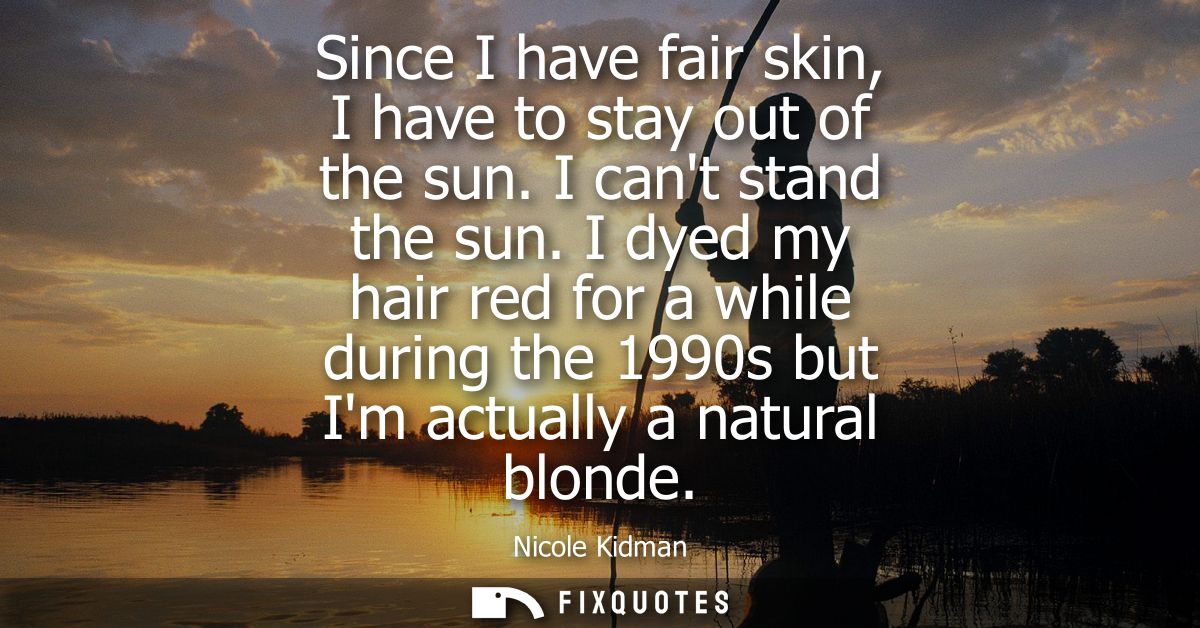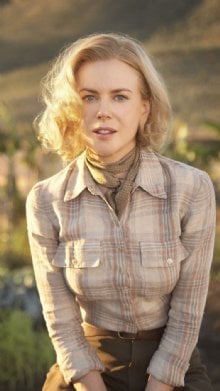"Since I have fair skin, I have to stay out of the sun. I can't stand the sun. I dyed my hair red for a while during the 1990s but I'm actually a natural blonde"
About this Quote
Nicole Kidman’s reflection on her fair skin and preferred appearance reveals both personal and cultural layers. She acknowledges her fair complexion, a trait that requires vigilance regarding sun exposure. This sensitivity is partly practical, fair skin is prone to burning and sun damage, which can lead to discomfort or health risks like skin cancer. Beyond the physical implications, her words also touch upon the emotional or psychological impact. “I can’t stand the sun” sounds more than just medical; it hints at a sense of alienation or discomfort with elements that many people might enjoy, such as sunbathing or outdoor activities under bright light. There’s a subtle suggestion of exclusion from a norm, especially considering the Australian context, where outdoor life and sun are celebrated.
Her mention of altering her hair color in the 1990s adds another layer. By saying she “dyed [her] hair red for a while” but is “actually a natural blonde,” Kidman highlights the fluidity of identity in the entertainment industry. Hair color, especially for actresses, often symbolizes more than aesthetics. Changes in hair can relate to roles played, public image, or personal experimentation. The choice to go red might have been inspired by fashion, a character, or a desire to reinvent herself, but she ultimately identifies as a natural blonde. This distinction unveils the tension between natural attributes and constructed images, a common experience for public figures constantly in the limelight.
Altogether, Kidman’s statements weave together notions of vulnerability, adaptation, and authenticity. She copes with her physical realities while also navigating the shifting demands of beauty and persona. Her comments subtly critique societal beauty standards and the personal negotiations required, especially for women in industries that hold appearance under close scrutiny. Through her brief remarks, a rich undercurrent of adaptation, self-awareness, and quiet resilience emerges.
About the Author

